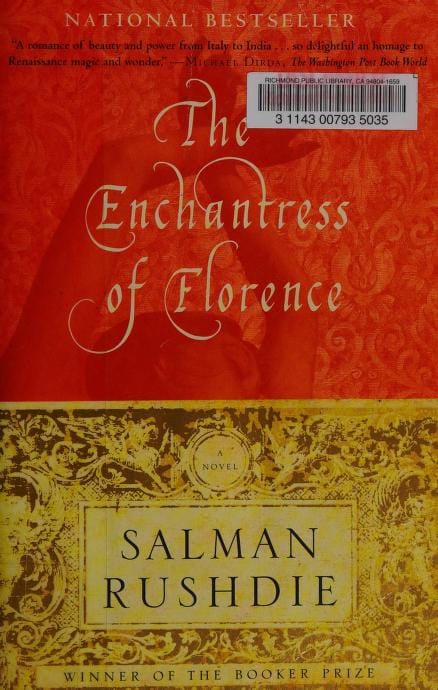Unlocking the Magic of Salman Rushdie’s The Enchantress of Florence
Explore Salman Rushdie's The Enchantress of Florence—plot, themes, historical context, and why this magical novel still captivates readers today.

Introduction: A Tale Where Empires Meet Imagination
The Enchantress of Florence is Salman Rushdie’s shimmering fusion of Mughal India and Renaissance Italy, a novel that invites readers to cross oceans of history and rivers of myth in a single sentence. Published in 2008, the book remains a jewel in Rushdie’s crown, combining meticulous research with the author’s trademark magical realism. Whether you are a seasoned admirer of his work or a curious newcomer, this story of beauty, power, and storytelling itself casts a spell that still feels fresh more than a decade later.
Plot Overview: From Fatehpur Sikri to Florence
The narrative opens in the sixteenth-century court of Emperor Akbar, where a mysterious blond traveler calling himself “Mogor dell’Amore” arrives with a claim that could upend the Mughal dynasty: he insists he is Akbar’s relative and bears a secret about a lost princess named Qara Köz, the legendary Enchantress of Florence. As Akbar listens, the novel shifts geographically and temporally, tracing Qara Köz’s path from imperial Hindustan to the dazzling city-states of Italy. Court intrigue, Medici power plays, and Ottoman expansions intertwine, showing how a single life can echo across continents.
Historical Backdrop: When East Looked West
Rushdie roots The Enchantress of Florence in a pivotal age when global exploration was accelerating and ideas were flowing almost as fast as armies. Akbar’s capital of Fatehpur Sikri, conceived as a utopian metropolis, mirrors the artistic ferment of Florence under the de Medicis. By pairing these two golden ages, Rushdie underscores common curiosities: both cultures chased advances in art, science, and governance while grappling with religious dogma. The setting thus becomes more than mere decoration; it is the crucible in which the novel’s questions about identity and power are forged.
Major Themes: Storytelling, Freedom, and Female Agency
At its heart, The Enchantress of Florence is a meditation on storytelling itself. The mysterious traveler’s tale forces Akbar—and by extension the reader—to confront how stories shape reality. Rushdie also explores political freedom, as Akbar experiments with Din-i-Ilahi, a syncretic religion meant to transcend sectarian divisions. Most poignant is the focus on female agency. Qara Köz, though often seen through the male gaze, repeatedly seizes control of her fate, defying cultures that would reduce her to a pawn. Her ability to captivate kingdoms becomes a metaphor for the power of narrative to move nations.
Characters That Linger
Akbar the Great is rendered with affectionate complexity, equal parts philosopher-king and insecure son haunted by his father’s brutality. Qara Köz herself glimmers like a mirage, a woman continually reinvented by those who desire her. Lesser figures such as Niccolò Vespucci, Antonino Argalia, and the self-serving Medici factions enrich the tapestry, each revealing how ambition and imagination can dovetail—or collide. Rushdie’s gift lies in allowing even minor characters a memorable vignette, making the world feel vast yet intimate.
Narrative Style: Rushdie’s Baroque Fireworks
Readers familiar with Rushdie will recognize his exuberant diction and labyrinthine sentences. The Enchantress of Florence, however, leans even more heavily into ornate description, as if mirroring Renaissance artistry. Yet beneath the stylistic flourishes sits rigorous structure: alternating chapters echo the ebb and flow of oral epics, while meta-fictional nudges remind us that truth and invention share a border. The result is a reading experience that rewards patience; each page offers layered references to Persian poetry, Italian humanism, and Islamic philosophy.
Critical Reception: Applause and Debate
Upon release, the novel received the Best Fiction prize at the British Book Awards and garnered praise for its sumptuous world-building. Critics admired its daring comparison of two civilizations often placed at odds. Some reviewers, however, felt the lush prose verged on self-indulgent or that female perspectives were filtered too strongly through male narrators. Such debates mirror larger conversations about postcolonial literature and representation, making the book an enduring subject for academic study and book-club sparring alike.
Why Read It Now?
In an era obsessed with binary clashes—East versus West, tradition versus modernity—The Enchantress of Florence offers a bracing reminder that cultures have mingled for centuries. Its depiction of pluralism feels urgent amid contemporary polarization. Moreover, the novel’s celebration of female autonomy prefigures ongoing global conversations about gender equity. Finally, Rushdie’s sheer exuberance provides escapism without sacrificing intellectual heft; few books manage to be both richly educational and delightfully entertaining.
Tips for New Readers
If this is your first foray into Rushdie, allow the prose to wash over you before worrying about every historical reference. Keep a map—or at least a mental compass—handy, as characters leap from Fatehpur Sikri to Florence, from the battlefield of Chitor to the waters of the Arno. Annotations or quick online searches can deepen appreciation of the book’s Renaissance art cues and Mughal court rituals, but they are optional. The core narrative remains resonant even without specialized knowledge.
Conclusion: A Spell Worth Casting
The Enchantress of Florence endures because it captures the transformative power of stories themselves. Through Qara Köz, Akbar, and a cast of dreamers and schemers, Salman Rushdie reveals that history is not a closed ledger but a living manuscript waiting to be rewritten. By refusing to draw hard borders between fact and fable, East and West, male desire and female agency, the novel encourages readers to envision a more fluid, interconnected world. That, ultimately, is the most enchanting magic of all.



